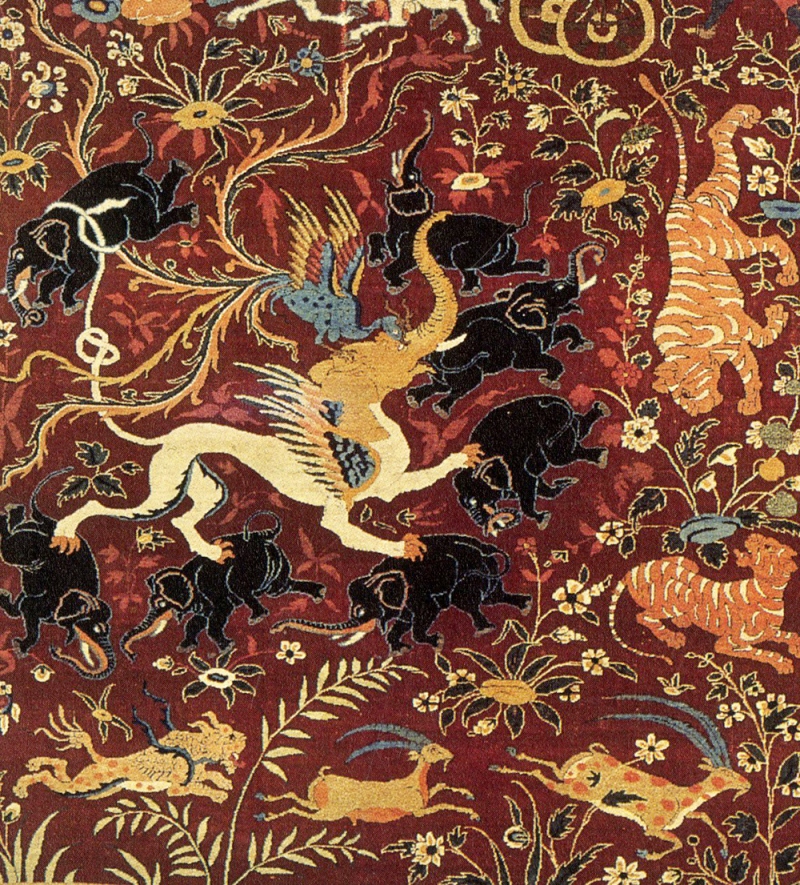
In 2015 we put up a blog on the Tile Mosaics of Lahore Fort, and like all others puzzled by some of its features. As there is no historical account, in recent years scholars did comment on same. But nobody got up on the rampants to study them in detail. Obviously it goes to the credit of Agha Khan programme for such restorations, that details have started coming up. Of course we have the original book of the Archaeological Survey of India in 1920 and the illustrations and writings done on same by scholar J. Ph Vogel, who indeed did a tremendous job at that time. There were some illustrations done of same in 1890, and some of them are even preserved today in the Cambridge University library. Foreign visitors never touched same or dismissed them like William Barr (1839) as being grotesque. Even today Yael Rice a modern researcher alludes to their lack of public visibility. Everybody approaches art and culture with the present spectacles of time. I was invited to mount the steel trappings and see them close, but it seems hazardous to me.
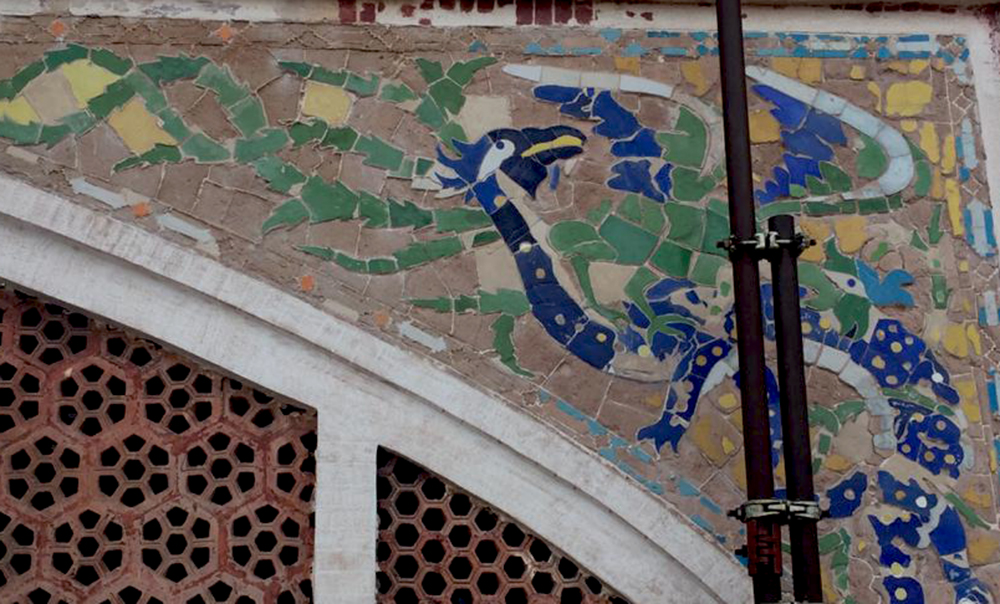

The most surprising newly discovered thing is that some of these tile mosaics have inscriptions. Not many but few are there. And two names appear on same. One is Hussain and the other Abdullah. In all cases name of two painters who drew the drawings or painted them (nobody would have the guts to put up their names for public consumption except painters themselves). A worthy addition to list of Lahori painters. There are two inscriptions on a panel of Calligraphers. One says Allah Baqi and the other says Ya-fatah, Allah Akbar. The surprising thing is that Abdul Baqi Adad was a famous calligrapher of that time, and Al-fatah too could be the name of a calligrapher, of Akbar’s time. Alluding such things was very true for Mughal artists.
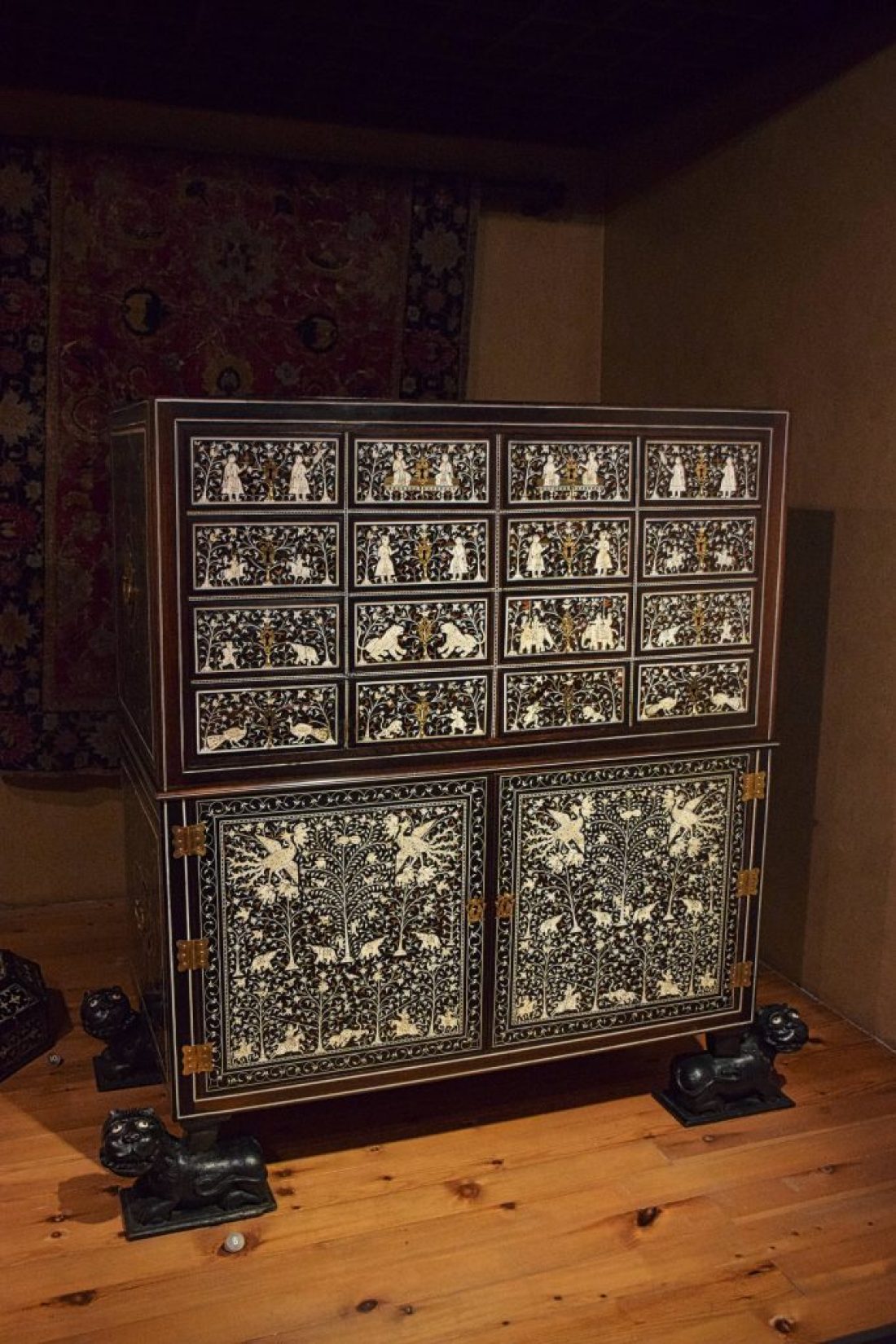
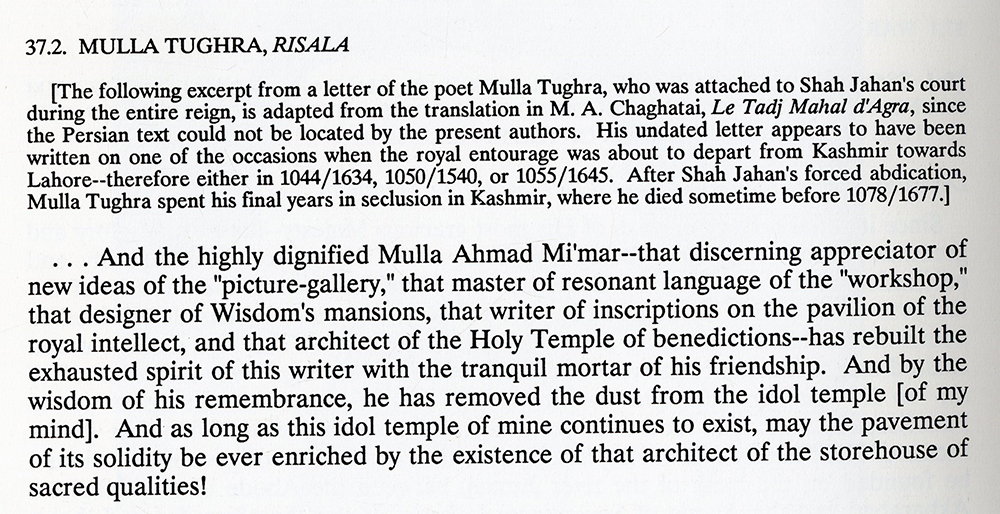
Another surprising thing is that there are no panels related to Hinduism. A common theme (appear at many places) at that time were images showing a Simurgh attacking a Gaja-simha (a lion with elephant head). Simurgh is a bird from Islamic context and a Gaja-simha from Hindu symbolism. The appeal of that image was the Simurgh attacking a Gaja-simha showing the superiority of Muslim culture over Hindu culture. On the Lahore Fort the Simurgh is there attacking a dragon, whereas the dragon is having a fierce Garuda like face, the Simurgh not. So although Gaja-simha is avoided being shown here, the animal has particular connotations. And another clarity is absence of any Christian cherubs on the tile mosaics. The much proclaimed fancy of Jahangeer with images of Jesus Christ and Mary not there in any way. Researchers point to the perhaps image of an Englishman, and even with the greatest fancy, cannot understand his placement there. For some he could be Thomas Roe, when Jahangeer does not even mention once Thomas Roe in any capacity. Thomas Roe in dress of an ordinary worker belies all such claims, and with hands folded in obedience. Not worthy of being considered an ambassador here, looks more like a minor attendant. We will research on same.
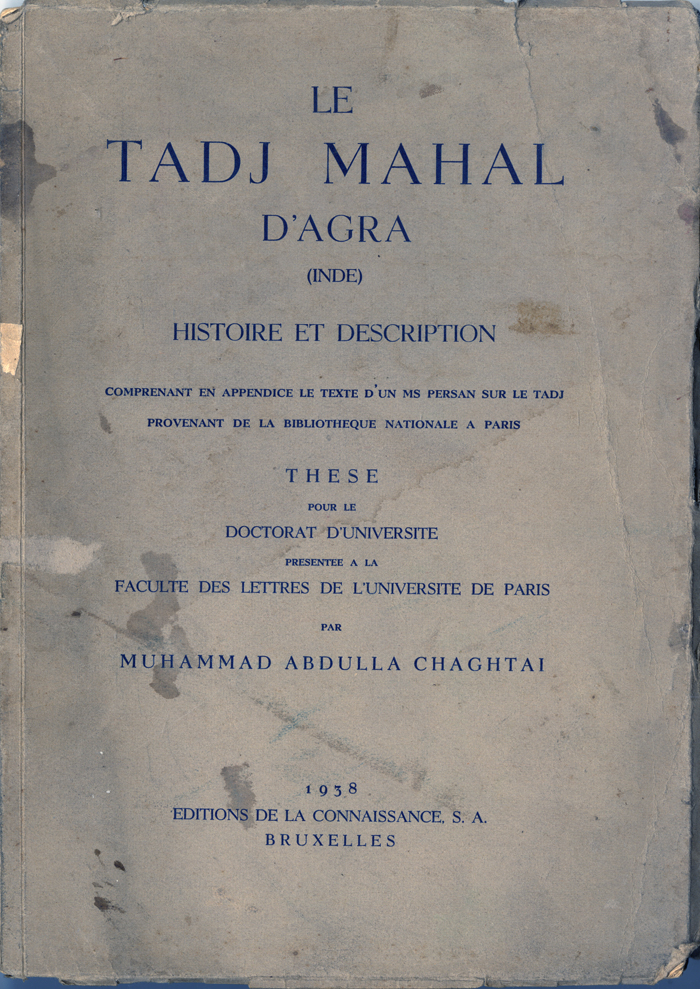
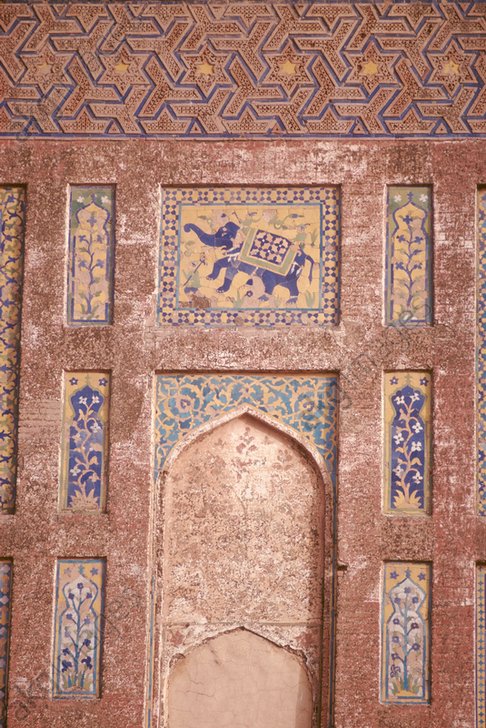
Although there are male and female fairies, there are no female images on the tile mosaics. Why? The Mughals were fond of depicting women in various poses, and their absence points to the nature of decision making in making these tile mosaics. For public, for private or for royalty alone. One can only wonder. The angels are there in the Wazeer Khan hamam Lahore, and were also there in Gola Serai Lahore of Wazeer Khan, demolished by E.D. Maclagen for security purposes before 1910. Possible other tile mosaics too for Nawab Wazeer Khan was involved in the over haul of Lahore Fort and could have carried the painters to his serai too.
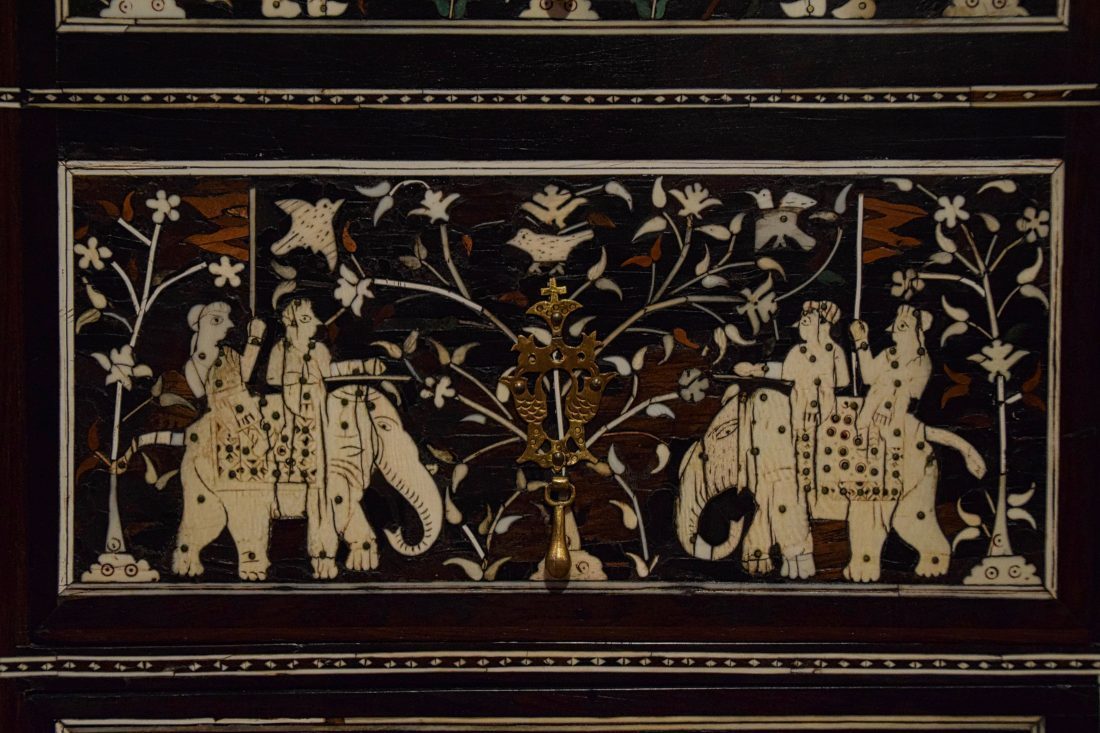
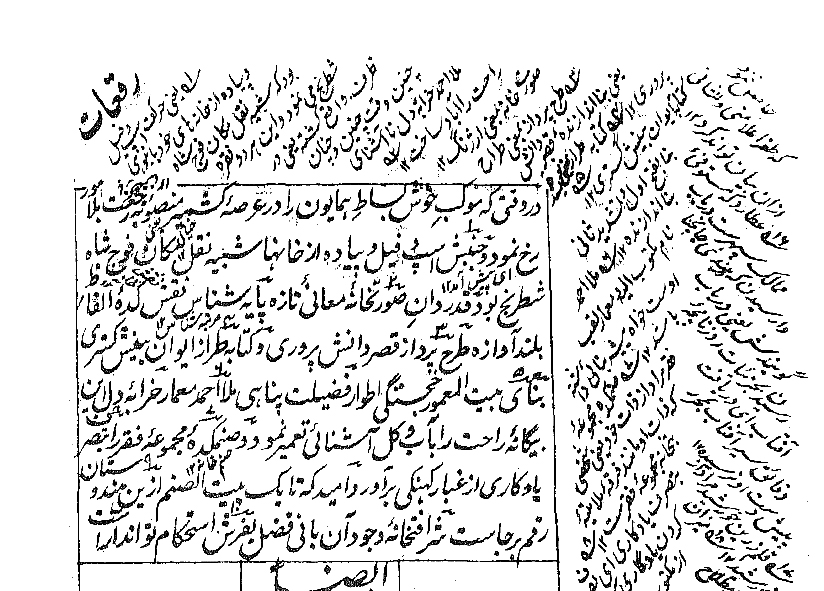
Research would continue but the tile mosaics have been terribly neglected by western art historians and critics for reasons unknown. Our family is linked with Lahore Fort as other Mughal monuments, for we are descendants of Ustad Ahmad Mimar, Chief architect of Shah Jahan, and he is on record as being attached in work to the Lahore Fort itself. Mulla Tughra (the famous diary keeper) was with Shah Jahan in Kashmeer and in a letter addressed to Ustad Ahmad, he tells him that Shah Jahan is about to depart from Kashmeer to Lahore and should complete the works are soon as possible in Lahore Fort but then says something fantastic;
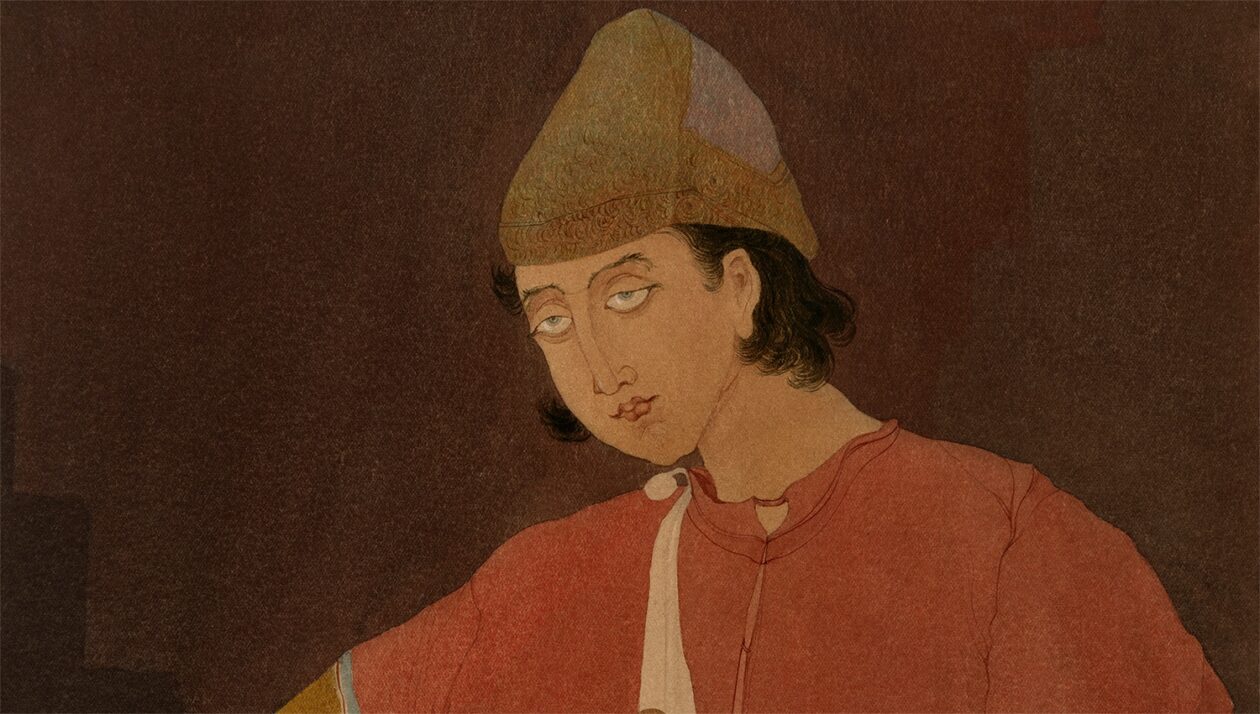
Gaja-Simha, with body of lion and head of elephant, is a source of ferocity and strength with power over many elephants. The Simurgh attacking same with impunity is a direct connotation of two cultures, however much we may avoid analysis.
Freedom of expression well done
Unlimited treasures in Lahore
So much movement in tiles and creating a 3D effect by reducing increasing size of figures not there even in miniatures
Western people jealous of our heritage
So much information
Our present people disparage our culture most
Hello,
PLease can you give the reference of the textile showing a simurgh and a Gaja-Simha or Rukh, where is it from?
Thanks